Articles of 2010
MEMORIES WITH MLADINICH: Edwin Torres
For as long as he can remember retired Manhattan Supreme Court Justice Edwin Torres has been a boxing fan, so he was thrilled to be appointed to the New York State Athletic Commission in 2008 after three decades on the bench.
As much as Torres enjoys being part of the regulatory and administrative process for boxers, managers and promoters, what he loves most about the new job is being personally involved with the sport that has been so close to his heart for all of his 79 years.
There is not much the longtime jurist, who is also the author of such quintessential New York-themed books as “Carlito’s Way,” “Q&A” and “After Hours,” all of which were made into successful feature films, loves more than a good scrap.
He is especially enamored of Juan Manuel Lopez, 28-0 (25 KOS), the hard-punching Puerto Rican featherweight, and Cuban sensation Yuriorkis Gamboa, 17-0 (15 KOS), both of whom recently fought in separate bouts at Madison Square Garden.
“Lopez is a buzz saw and an idol in Puerto Rico,” said Torres. “Gamboa’s nickname is El Ciclone, which means cyclone in English. I told him he fights more like a full blown hurricane. If Lopez and Gamboa ever collide, it will be the fight of the year.”
Torres is also a big fan of Miguel Cotto, but would like to see him retire from the ring. From a fan’s perspective, he is looking forward to the upcoming bout between Cotto and Yuri Foreman, but admits to being a bit perplexed by Foreman’s success as a pro.
“He’s a very good fighter, but he sure doesn’t look like a pug,” he explained. “He’s such a good-looking guy, there’s not a mark on him. It’s great to see a guy get that far without getting marked up. That really tells me how good of a fighter he is.”
Since joining the commission, the fighter that has impressed Torres more than any other is Joe Calzaghe, who survived a flash knockdown and went on to totally dismantle Roy Jones Jr. at MSG.
“What he did to Jones after getting knocked down was amazing,” said Torres. “He put his arms by his side and his head in Jones’s face. Jones had been doing that bleep for years, but Calzaghe beat him at his own game.”
While growing up in New York’s Spanish Harlem, Torres said it was hard not to be a student of the game. The first neighborhood heroes he recalls were bantamweight champion Sixto Escobar and lightweight and welterweight title challenger Pedro Montanez, both of whom hailed from Puerto Rico, the place where Torres’s beloved father, Edelmiro “Eddie” Torres, was born.
“Some of my most thrilling moments as an adolescent revolved around boxing,” said Torres. “I shook hands with Jack Johnson at the Fleet Circus, and with Jack Dempsey while I was walking down Broadway. The memory of meeting Dempsey is emblazoned in my mind.”
Back then, said Torres, boxing was an integral part of the city’s fabric. Although there were clear lines of delineation between the newly arrived Puerto Ricans and the Italians and African-Americans in Spanish Harlem, the popularity of Sugar Ray Robinson and Joe Louis transcended all racial and ethnic lines.
“One day word got out that Joe Louis was going to be at the Oddfellows Temple on 106th Street and Park Avenue,” recalled Torres. “When he pulled up in a limo and stepped out, it was like God had appeared.”
“We used to see Sugar Ray Robinson drive around in his chartreuse Cadillac,” he continued. “He was bigger than life, the greatest fighter of all time. He was non-pareil.”
If athletic icons like Louis and Robinson were not there to run interference for local gangs, things could get pretty rough.
“Puerto Ricans were not supposed to go east of Park Avenue,” explained Torres. “Our area was between Park and Fifth, from 99th to 116th streets,” recalled Torres. “The blacks were west of Fifth. There was a tough Italian gang called the Red Wings, who had the entire area east of Park.”
One time, after Torres ventured over to the Jefferson Pool, which was located on First Avenue, he was set upon by the Red Wings who beat him with bicycle chains and stick ball bats.
Torres’s father, who had served 12 years in the army and later became a captain with the postal police, was an extremely intelligent man who understood the value of education above all else. He demanded that his son be studious, and often told him that if he got locked up he’d rot in jail because he wouldn’t bail him out.
One time his father spotted Torres in a pool hall on East 106th Street. He tapped on the window, curled his finger and ordered him to finish his game of nine-ball and come right home.
“He told me to never go there again, and I never did,” said Torres. “It was good advice.”
Torres and a friend, Johnny Calderon, entered the 1949 Golden Gloves tournament. Torres injured his hand early on and had to drop out, while Calderon made it all the way to the finals.
“It was probably for the best because the fact is I couldn’t box oranges,” said Torres. “I couldn’t fight for bleep, and I didn’t want to get hit in the face.”
Torres served three years in the U.S. Navy and graduated from Brooklyn Law School, which made his father the proudest dad in the world. Calderon, who on more than one occasion saved Torres’s chestnuts on the street, wound up serving time in prison for murder.
A young, brash and handsome Torres cut a dashing figure as he defended some of Spanish Harlem’s most notorious criminals in his early days as a lawyer. Late one evening, after leaving a club and being seated in a breakfast joint with several clients, Jake LaMotta entered the eatery.
“He just stared at us, didn’t say a word,” said Torres. “He started circling the table, glaring at us in a belligerent manner. We tried to make believe we didn’t see him, but he kept glaring, looping around like a dangerous cat. Then he left.”
One of Torres’s clients, who he described as “a short guy, but the baddest at the table,” pulled an automatic weapon out of his pants, racked it, put it in his crotch, and said, “If that mother comes back, I’m blowing his head off.”
Torres, who was newly appointed to the Bar, could already read the headlines. He imagined himself being a prosecution witness in a defense case, as well as being disbarred and breaking the heart of his father. No one was more relieved than he was when the Raging Bull did not come back.
After several years as a defense lawyer, Torres became the first Puerto Rican assistant district attorney to ever be hired in Manhattan. Frank Hogan, who was then the DA, didn’t want him, but powerful Greenwich Village politician Carmine DeSapio used his influence to get him installed in the prestigious position.
“Carmine was my goombah,” said Torres. “He invented me. When he gave his word, it was good. He got Hogan to give me a six-month trial period. The job paid $60 a week.”
Shortly after assuming that position in 1959, two Puerto Rican punks who belonged to a gang called The Vampires murdered a teenager in a Hell’s Kitchen park. The case made national headlines because one of the perpetrators, Salvador Agron, had worn a cape during the crime. He was dubbed “The Capeman” by the press.
Torres wound up as the second seat (assistant) to the prosecutor during the well-publicized trial.
One day in court, Torres said “the hacks (guards) were taking The Capeman out of the courtroom. As he passed me, he snarled at me and called me a Spanish name that means stool pigeon or traitor. He was a punk and a half, so I jumped up. I still had the ghetto in me back then.”
Torres made his bones in that case. When his six-month trial period was up, Hogan was asked to assess his new charge. “I wouldn’t trade him for two assistants,” was the response.
Appointed to the bench in 1977, Torres quickly garnered a well-deserved reputation as the toughest of jurists. Although he is most famous for telling a killer that his parole officer had not even been born yet, he said that is far from his best pre-sentencing comment.
He told one rapist, “I will rise from a moldy grave and visit a pox on the misguided parole board that sees fit to release you.”
The next day he observed one of his court officers scratching his crotch. When Torres asked what he was doing, the officer said he had been visited by a pox.
As much as Torres likes to talk about the past, he is equally comfortable in the present. One minute he’ll be regaling you with a story about being awed by meeting Rocky Marciano at the Copacabana, the next he’s reveling about how much he enjoys the maniacal Irish fans that exciting middleweight John Duddy brings to his fights.
He is not a big proponent of Mixed Martial Arts, which is currently prohibited in New York State, but concedes, “People love it and it generates a lot of money. I’m a purist, but maybe it’s time has come. If it’s something that is inevitable, there’s no point in protesting for the sake of protesting.”
Like just about everyone else who follows boxing, Torres is disappointed that the heavyweight division is so dreadful, but believes that Manny Pacquiao is by far the most exciting fighter he has seen in a long time.
“What a throwback he is!” proclaimed Torres. “He comes to fight, not run around. His hand speed is on par with Pernell Whitaker, but he’s so aggressive and gets stronger as the fight progresses.”
Perhaps Torres enjoys Pacquiao’s throwback status because he is such a throwback himself. He never ventures outside unless he is impeccably attired. His fedora fits perfectly on his large square head. He still has the rugged good looks and thick musculature of an older screen legend. He works out daily – and it shows in his natural grace and fleet-footedness. He looks a lot closer to 50 than 80.
What is most appealing about him, in an old school way, is the salty language of the streets that he speaks with such fluidity. He says it like he sees it, and makes no excuses in the interest of political correctness or expediency.
His latest writing project is a screenplay called “Pleasant Avenue,” which chronicles the beginnings of large scale heroin importation into the city by the mob in the years after World War II.
“In 1948, I was here in the midst of this, a cauldron of gangs,” Torres recently told the New York Times. “The ethnic lines started to be crossed with the introduction of heroin. All of a sudden, mothers of some of my friends wanted to know why their sons were stealing clothes, appliances, anything. They didn’t know what heroin was. Even hip guys like me had never seen a street junkie.”
The two protagonists, Mario and Nino LoPresti, are the sons of a man who lost his life standing up to the mob. One becomes a police officer, while the other is a pug who becomes a junkie.
The language is crisp and snappy, in much the same fashion that Torres talks. “Slurs are hurled fast and often, and one seven-letter curse is so common that it becomes nothing more than a word that heralds the imminent arrival of a noun,” wrote the Times.
From all indications, this might be Torres’s best work yet. The project, which will soon go into film production, has him as thrilled as a youngster who just won his first fight or sold his first script.
“I’m almost 80 and this bleep still excites me,” he said. “I’m a listener and a chronicler, and I’m looking forward to someday seeing this story on the big screen.”
-

 Featured Articles3 weeks ago
Featured Articles3 weeks agoAvila Perspective, Chap. 330: Matchroom in New York plus the Latest on Canelo-Crawford
-
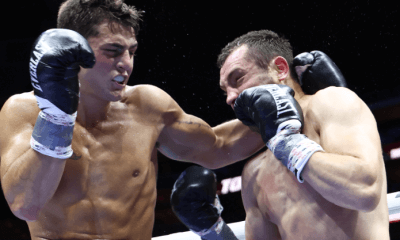
 Featured Articles2 weeks ago
Featured Articles2 weeks agoVito Mielnicki Jr Whitewashes Kamil Gardzielik Before the Home Folks in Newark
-
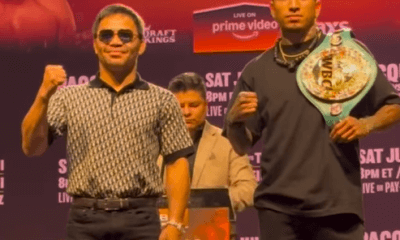
 Featured Articles4 weeks ago
Featured Articles4 weeks agoAvila Perspective, Chap 329: Pacquiao is Back, Fabio in England and More
-
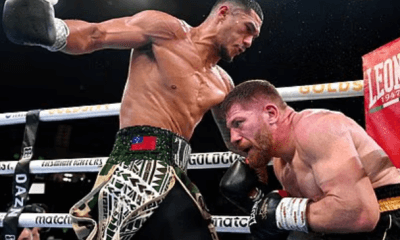
 Featured Articles3 weeks ago
Featured Articles3 weeks agoOpetaia and Nakatani Crush Overmatched Foes, Capping Off a Wild Boxing Weekend
-
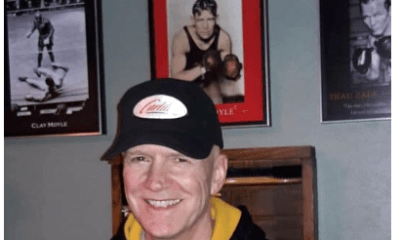
 Featured Articles2 weeks ago
Featured Articles2 weeks agoCatching Up with Clay Moyle Who Talks About His Massive Collection of Boxing Books
-

 Featured Articles4 weeks ago
Featured Articles4 weeks agoFabio Wardley Comes from Behind to KO Justis Huni
-
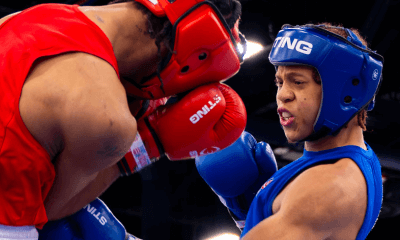
 Featured Articles1 week ago
Featured Articles1 week agoMore Medals for Hawaii’s Patricio Family at the USA Boxing Summer Festival
-
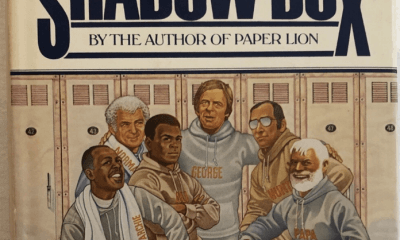
 Featured Articles4 weeks ago
Featured Articles4 weeks agoDelving into ‘Hoopla’ with Notes on Books by George Plimpton and Joyce Carol Oates















